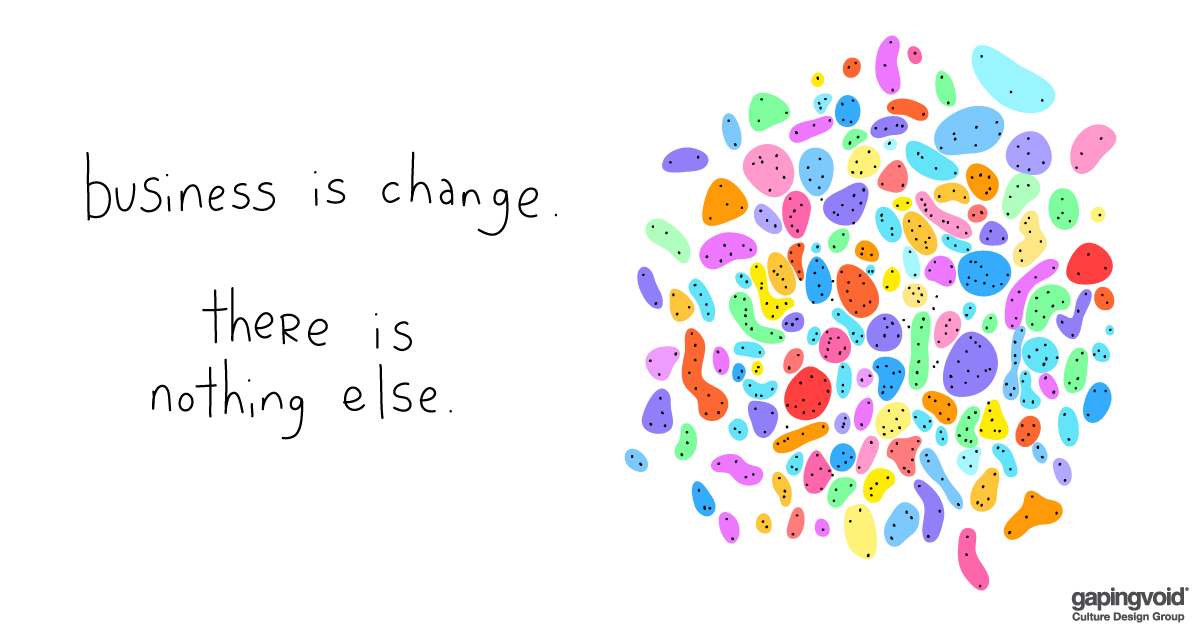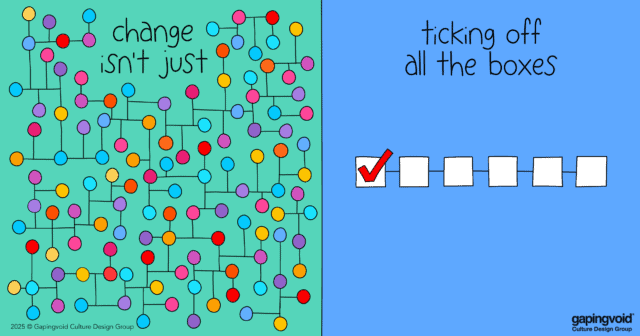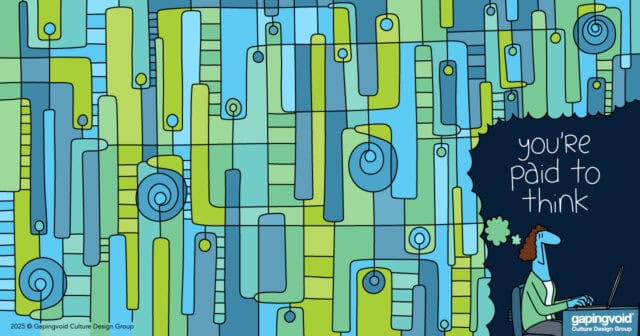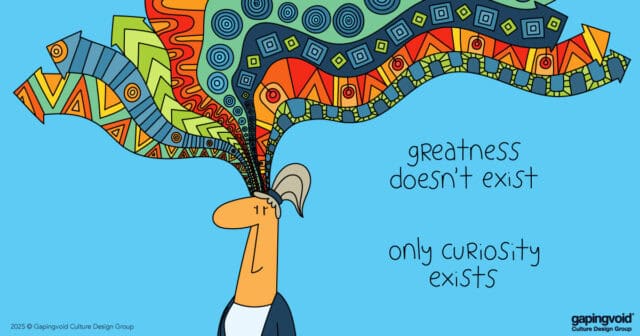
Nearly two decades later, this 2004 image seems to have aged particularly well.
It got us thinking again about “Digital Transformation.”
DT, as you know, is a big deal. Nearly every organization of size struggles with it.
The trouble starts when you start asking people what DT actually means. What is it, exactly?
And people kinda scratch their heads. It’s hard to nail down.
This lack of mental traction we think is because of poor word choice. “Transformation” is not really a word people use to describe everyday life.
Nobody ever gets out of bed in the morning and says, “I’m going to transform myself today!!!” It’s more like a word out of a superhero movie. By itself, it sounds ridiculous.
What people are really talking about, in more everyday language, is “change.”
Because as the image says, “change” is the Alpha and Omega of business.
All DT is, then, is using technology to create and manage change at an ever more accelerated and effective rate.
For all the technical wizardry and big-budget enterprise software associated with DT, it’s really just common sense more than anything else.
The other thing to remember, of course, is that technology is not the problem, people are the problem.
Many, if not most, DT initiatives fail, and they fail mainly because of cultural issues i.e. human beings.
Culture is key to DT because all roads lead back to culture in the end.



